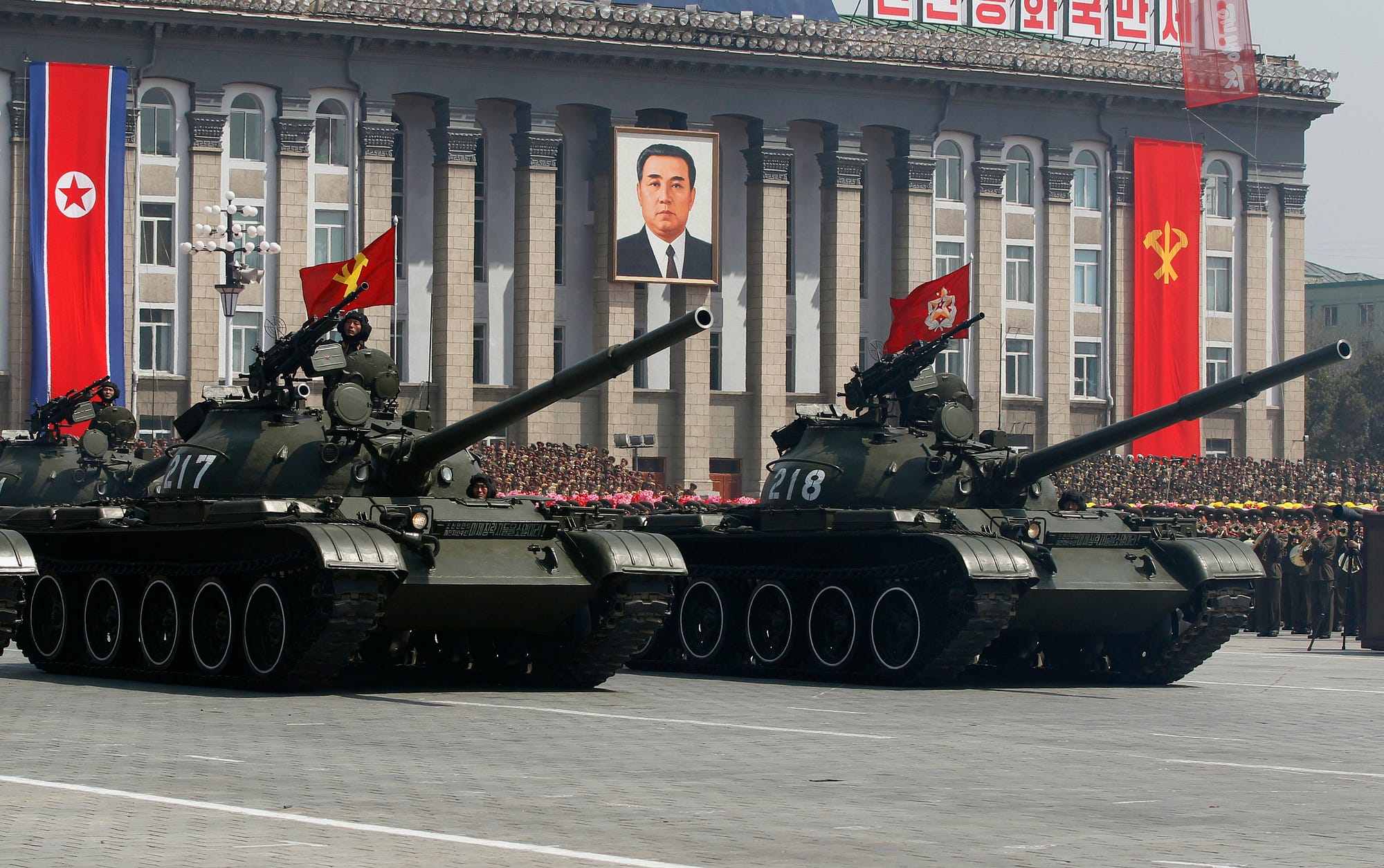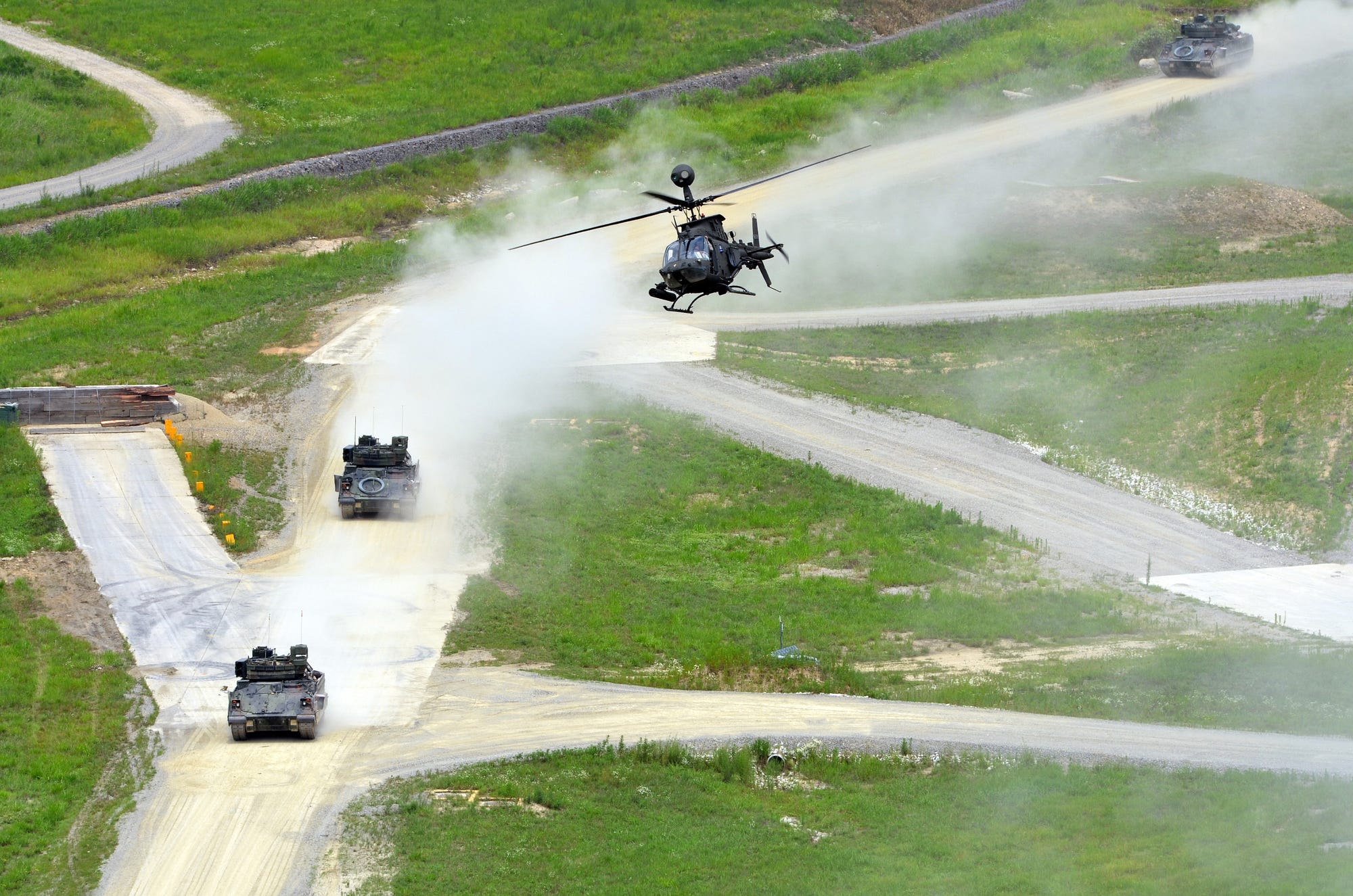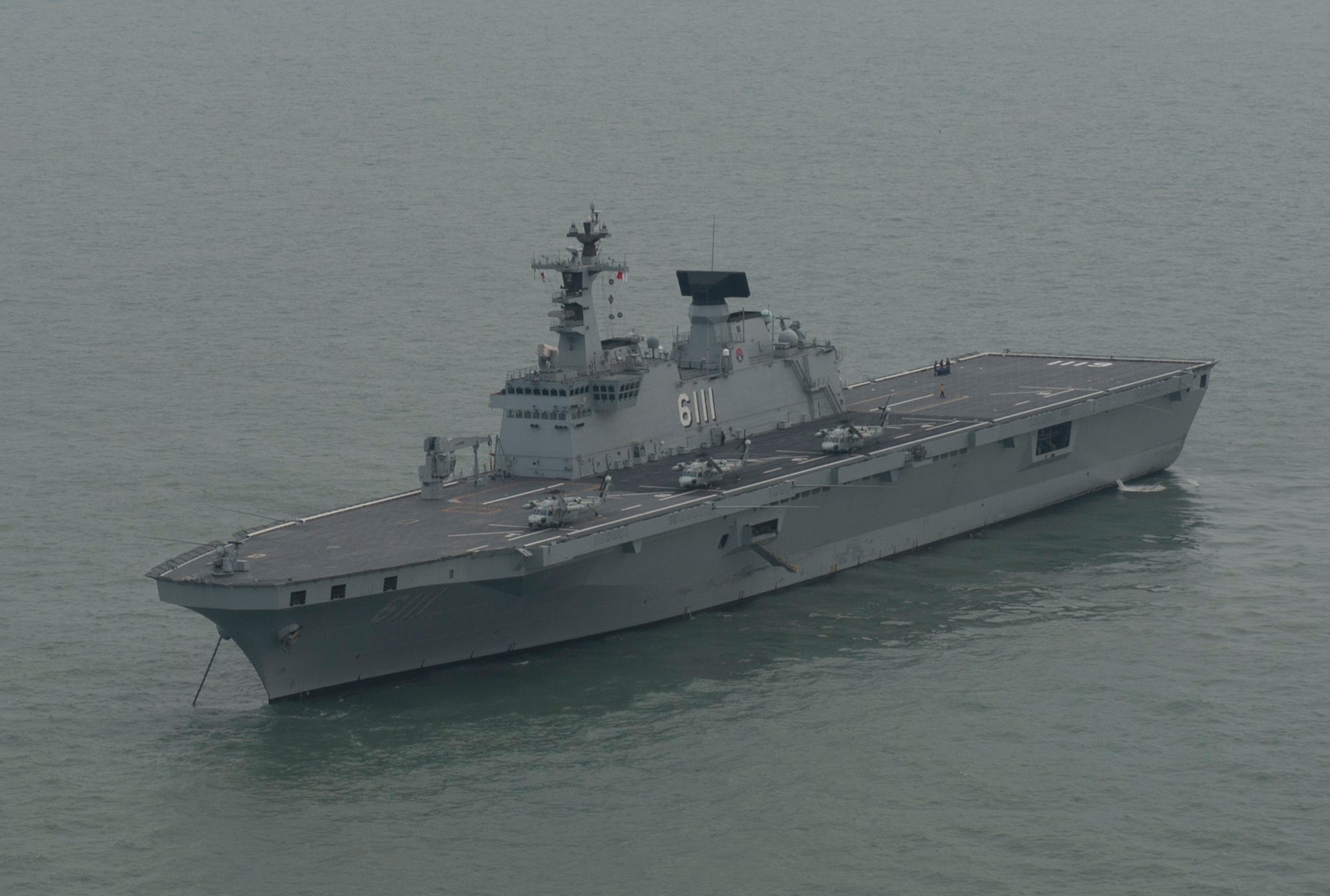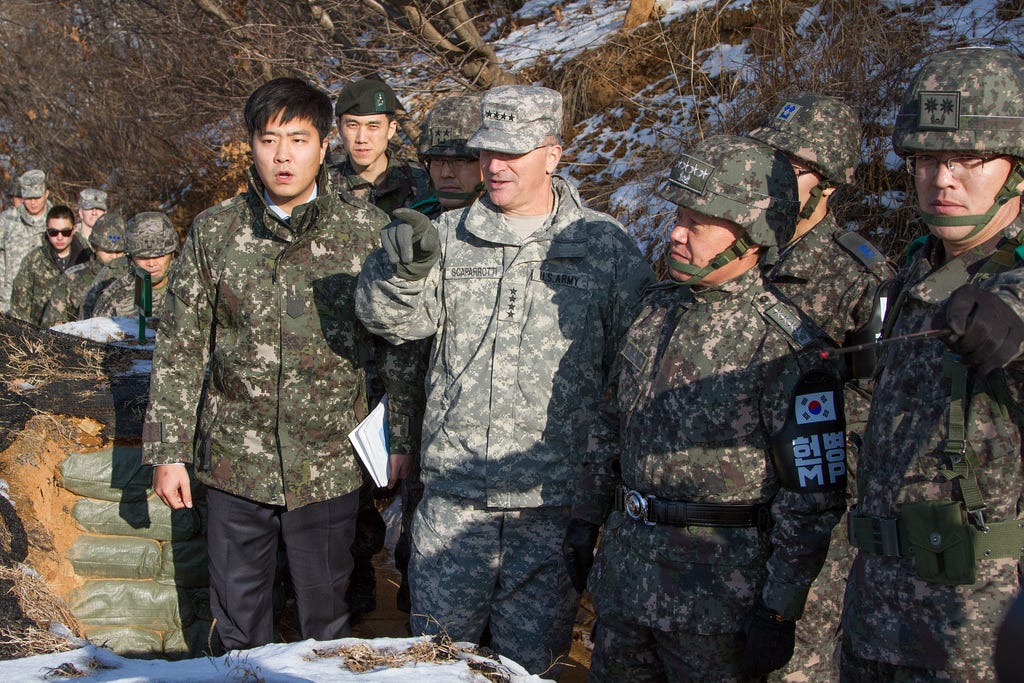Seoul can defend itself
Imagine you possess the 15th-largest economy in the world. You have world-class cars and consumer goods, glittering streets and a lifestyle as good as any in the industrialized world.
Now, imagine you are being threatened by a hostile country one third as wealthy as Ethiopia.
Ethiopia.
In order to protect yourself from this economic juggernaut, you require the presence of nearly 30,000 American troops, the overpowering might of the U.S. nuclear arsenal and an American general to take charge in case this mighty opponent attacks.
Laughable, right? Not at all. Welcome to South Korea.
It’s time for the United States to leave the Korean peninsula. South Korea can defend itself.
Before the Korean War, the North was a relatively prosperous place, with the majority of the peninsula’s heavy industry and enormous mineral and timber wealth. South Korea was agrarian and poor.
In the six decades since the Korean War ended, the economies of North and South Korea have changed. Dramatically.
In 2012, South Korea’s GDP was $1.7 trillion. Per capita GDP for the South’s 50 million people was $32,400 in 2013.
North Korea, by contrast, has become spectacularly poor. GDP is a paltry $40 billion—$1,800 for each of 25 million people. North Korea is the world’s182nd economy by GDP, poorer even than Ethiopia, Guatemala and Cuba.
By 2012, the South Korean economy was 41 times larger than North Korea’s.
 At top—a South Korean K-1 tank. Photo via Wikipedia. Above—North Korean T-55 tanks. Photo via Business Insider
At top—a South Korean K-1 tank. Photo via Wikipedia. Above—North Korean T-55 tanks. Photo via Business Insider
The military balance
The North Korean military is one of the biggest in the world, with a total manpower of more than one million.
The People’s Ground Force has 950,000 troops, 4,200 tanks, 2,200 armored vehicles and 13,400 artillery pieces. The People’s Air Force has 110,000 troops, 800 combat aircraft, 300 helicopters and more than 300 transport aircraft.
The navy is the smallest with 60,000 troops, 70 submarines, 420 patrol ships, 260 amphibious landing craft and 60 mine warfare and support vessels.
The South Korean military has 650,000 personnel on active duty. The army’s rolls number 506,000 troops equipped with 2,300 tanks, 2,600 armored fighting vehicles, 600 helicopters and 5,400 artillery pieces. Seoul’s air force has 65,000 personnel operating more than 450 jet fighters.
The South Korean navy has 68,000 personnel with 12 submarines, 22 destroyers and frigates, 21 corvettes and 84 patrol vessels.
But raw numbers don’t tell the whole story. Most of North Korea’s equipment is very old. Its main warships and warplanes date back to the 1970s and, in some cases, even the ’50s. Pyongyang’s troops lack fuel, spare parts, even food and clothing.
The South Korean military is one of the most advanced in the world, with modern tanks, infantry fighting vehicles and artillery. South Korean F-15K and F-16C Block 52 fighters are nearly the equal of American jets.
The South Korean navy, with its Aegis destroyers and high-tech submarines, is smaller than North Korea’s ramshackle fleet but much, much better.
In almost all war scenarios, South Korea’s army is stronger.
 U.S. Army forces training in South Korea. Department of Defense photo
U.S. Army forces training in South Korea. Department of Defense photo
The American garrison
Washington keeps 28,500 troops in South Korea, including a division headquarters, an armored brigade, an aviation brigade and an artillery brigade. The U.S. Air Force has four squadrons of F-16 and A-10 jets at South Korean bases.
U.S. forces act as a tripwire on the peninsula. If North Korean troops moves south, they will run headlong into American units and trigger a massive response, as fighters, bombers and ground combat units from Japan, Hawaii, and the continental United States rush into battle.
An American general would command both American and South Korean forces during wartime.
According to former secretary of defense Leon Panetta, the U.S. could respond to North Korean aggression with nuclear weapons.
American troops will be in harm’s way the moment a war with North Korea begins. As the recipient of serious American military assistance, South Korea has a moral responsibility to the United States to prioritize the North Korean threat over all else.
But that’s not the case. South Korea is prematurely pursuing a regional leader status at the expense of its northern defense strategy—and of the U.S. forces that support it.
 The amphibious assault ship ROKS Dokdo, lone ship of her class. Department of Defense photo
The amphibious assault ship ROKS Dokdo, lone ship of her class. Department of Defense photo
Unnecessary weapons
One of the largest warships in Asia is South Korea’s Dokdo amphibious assault ship. Resembling a small aircraft carrier, Dokdo can carry up to 700 South Korean marines into battle by sea and air.
In sufficient quantity—that is, more than 700—the marines form a powerful counterattack force that could even threaten Pyongyang itself, a key objective of OPLAN 5027, the plan for defeating North Korea in wartime.
Seoul planned to build three Dokdo-class ships but has only finished one. All alone with just 700 marines aboard, Dokdo is a white elephant—a large, expensive vessel with inadequate capacity to affect the outcome of a major shooting war.
In the event of war, North Korea will almost certainly bombard the South with missiles with conventional—and possibly even nuclear, biological and chemical—warheads. It would seem to make sense for Seoul to deploy a ballistic missile defense system.
But that hasn’t happened.
South Korea relies on the medium-range Patriot missile and can only put up a local defense against ballistic missiles. The United States has proposed to send better defenses, but Seoul reacted with indifference.
The South insists it will develop its own defense system—one suitable for export. Who knows how long it will take. And until it does, U.S. forces on the Korean peninsula will be vulnerable to missile attack.
South Korea’s three Aegis destroyers are, in theory, capable of shooting down incoming rockets. Putting the country’s ballistic missile defenses at sea—safe from Northern commandos and saboteurs—makes a lot of sense. But South Korea chose not to purchase the software to make the ship’s anti-missile systems operational.
South Korea is buying 40 enormously expensive F-35 Joint Strike Fighters for $7 billion—that’s more than a fifth of South Korea’s annual defense budget.
Seoul already has enough jet fighters to defeat the North’s antiquated air force. Shooting down against obsolete MiG-29s does not require budget-busting F-35s, but being a regional military power does.
Money Seoul spends on Aegis destroyers—or an amphibious assault ship—is money it’s not spending on equipment that’s actually useful for South Korea’s main problem, North Korea. Each Aegis destroyer costs $938 million, enough to buy 300 K-9 self-propelled howitzers capable of raining artillery on advancing North Korean ground forces.
 Gen. Curtis Scaparrotti, commander of U.S. forces in Korea, with the chairman of the South Korean joint chiefs of staff Adm. Choi Yoon-Hee. Department of Defense photo
Gen. Curtis Scaparrotti, commander of U.S. forces in Korea, with the chairman of the South Korean joint chiefs of staff Adm. Choi Yoon-Hee. Department of Defense photo
Unready and unwilling
Despite its wealth and the urgency of the North Korean threat, South Korea is unwilling to take responsibility for its own defense.
Under a longstanding agreement between Washington and Seoul, in the event of war a U.S. general would assume control of the forces of both countries.
A plan that would return wartime control of the South Korean military to South Korea was supposed to take effect in 2015, but Seoul has indefinitely postponed it.
May be South Korea believes North Korea is no longer a serious problem and the South can safely strive for regional standing. If Pyongyang is no longer a threat, U.S. troops should no longer be necessary on the Korean peninsula.
The alternative is that South Korea believes North Korea is still a threat, but with Americans defending the South, Seoul can risk turning its attention outward. That amounts to United States subsidizing South Korea’s foreign policy, potentially at the cost of American lives.
Either makes a strong case for pulling U.S. troops from South Korea.
No comments:
Post a Comment